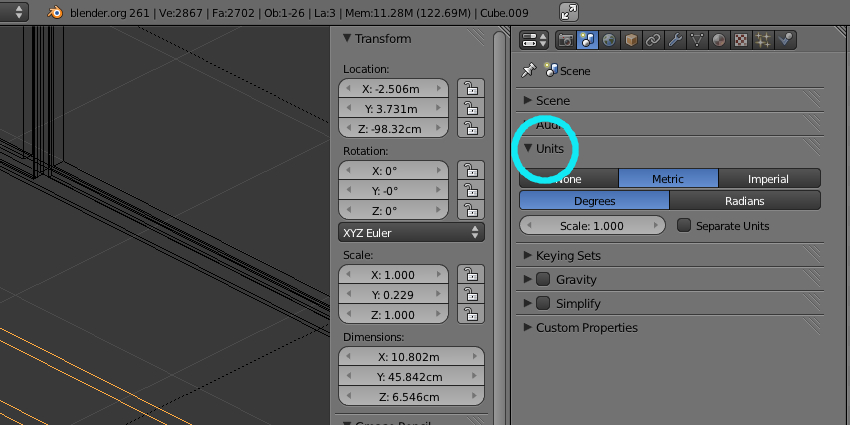

The zip function is a convenience available in Python.

For example, when a shape key is not marked as relative, different interpolation modes can be specified for its evaluation.
BLENDER POINT TO POINT MEASURE CODE
More features of each shape key can be modified than the code above suggests. The code below does not use bmesh in any substantive way. As explained before, this tutorial avoids it. Many modifiers allow a group to regulate the modifier's influence over the mesh.Įxamples around the web suggest using the from_edit_mesh and update_edit_mesh workflow. We've touched on vertex groups before in other contexts, such as visualizing complex numbers and scripting curves. The color-coding for vertex weights can be viewed in edit mode via the same menu used to turn mesh index display on and off.īecause the vertex weights in “NoiseGroup” approach 0.0 toward the bottom (negative z axis) of the icosphere (colored in blue) while the weights on the top (positive z axis) of the icosphere approach 1.0 (colored in red), and because the shape key is relative, the deformation is more extreme at the sphere's top than its bottom. The left image shows the mesh in edit mode the right, in object mode. The images above depict an icosphere with a “Deformed” shape key that warps the original vertices with Perlin noise. When a vertex belongs to the vertex group used by a relative shape key, the weight provided to that vertex will dictate how much influence a key has. Shape keys associate with a vertex group, again contained by an object.


BMeshes roughly parallel the information in mesh data, but shape keys are added to and retained by an object with mesh data. Nor is it clear what the benefit of creating shape keys through BMesh would be. However, it provides little detail beyond where to access the data, bm. (Older versions of Blender used the Attribute node.) Shape Keysīlender’s documentation suggests that shape keys can be accessed through bmesh. In newer versions of Blender, vertex colors can be supplied to a material via the Vertex Color node in the shader editor. Alternatively, we could build a palette (or color gradient) first, then assign them to vertex colors. We could refine this further by preventing duplicate colors from being entered into the palette. While in Vertex Paint mode, The palette can then be accessed through the Sidebar (keyboard shortcut N), in the Tools tab, under Brush Settings. One way to make generated colors accessible through the interface after the code has run would be to create a color palette through. That is why the co needs to be accessed from the vert in the above, but a new vertex can be created with just a tuple. However, because a point is the minimal information needed to insert a new vertex into a mesh, and because the point is the most relevant when transforming elements of a mesh, the two are easily conflated. Rather, it is a collection of data, of which the coordinate is one. Ultimately, a vertex is not merely a coordinate in space. The slippage between the terms ‘vertex’ and ‘coordinate’ may be the source of confusion, particularly when building from_py_data. The cone function can also be used to make cylinders. The plane is subdivided into quadrilaterals according to the number of horizontal and vertical segments provided. The grid primitive is a plane spanning the x and y axes, with a normal pointing forward on the z axis. Suzanne is the nickname for what ops refers to as a monkey head. Other primitives provided by bmesh.ops are: circle, cone, grid, Suzanne and UV sphere. Using a different order of composition than Translation, Rotation, Scale (TRS) as above may give different results. Matrix-matrix multiplication is represented by the matmul operator, or the symbol. This is because Euler angles lead to gimbal lock. There are also Euler angles, but it is better to get accustomed to matrices and quaternions instead. Then, a 4x4 copy of the matrix can be retrieved with to_4x4 alternatively, the matrix can be expanded in-place with resize_4x4. Wrap arguments supplied to mathutils entities in a collection: e.g., a tuple, Vector((1.0, 2.0, 3.0)), a list, Vector(), or a numpy array, Vector(numpy.array(, dtype=numpy.float32)).įor those who prefer quaternions, they can be converted to a 3x3 matrix with the to_matrix method. Otherwise the method will assume a 3x3 matrix is desired, and then an error will result from the attempt to composite matrices of different dimensions. Use the Diagonal method with a four-dimensional vector when making a non-uniform scalar.


 0 kommentar(er)
0 kommentar(er)
